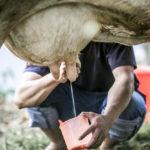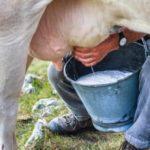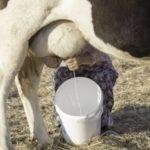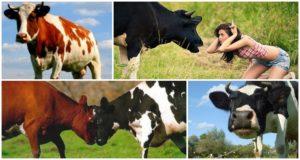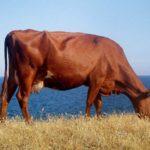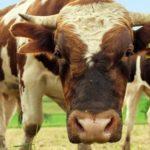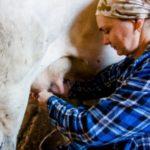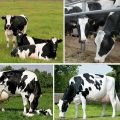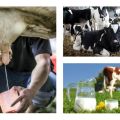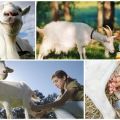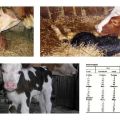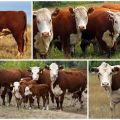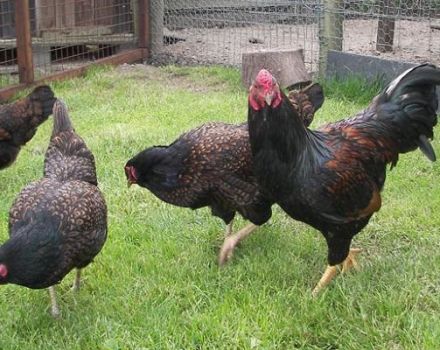How much milk does a cow give on average per day and the number of days per year
Lactation in cattle lasts about a year; for the regular receipt of dairy products, annual fertilization of animals is required. How much milk a cow gives per day and per year on average depends on breed characteristics, age, body condition, quality of housing and feeding, climatic conditions. There are record-breaking breeds with consistently high productivity, but even the most productive cow needs proper care.
Average milk yield
Lactation in a cow, like in a woman, begins during pregnancy. Young individuals from 2 years of age are ready for conception. The newborn calf feeds on colostrum, a greasy, dense, yellowish substance. After a certain time, the matured calf is removed from the mother, but the milk continues to be synthesized, it must be milked. Regular milking stimulates lactation.
Milking continues until the next conception. 2 months before giving birth, milk synthesis stops and resumes after the birth of the calf. It happens that the milk yield before calving does not decrease, the cow cannot rest before the next lactation period. In this situation, the portion of succulent feed is reduced in the diet. The animal passes into the dry phase, when the daily milk yield drops to 500 ml.
Average daily rate
On average, with an annual pregnancy, the daily amount of the product is 18-20 liters. But highly productive dairy cows have ways to give 70-80 liters per day.
Differences in daily milk productivity and fat content of milk between common cattle breeds are shown in the table.
| Breed | Milk yield, liters per day | Fat,% |
| Holstein | 40 | 3 |
| Yaroslavl | 16-18 | 5 |
| steppe red | 10-15 | 4 |
| black and white | 16-18 | 4 |
| jersey | 10-15 | 6 |
Monthly
To get the average monthly milk yield, the average daily milk volume should be multiplied by the number of days in a month. From one cow receive from 300 to 1800 liters of product per month. When calculating, the conditions of keeping cattle and climatic conditions are taken into account.
The highest monthly milk yield is noted in Israel, which is associated with a favorable climate and optimal living conditions on the local farms.
After calving, the amount of milk gradually increases, reaching a peak by the 2nd month of milking. The peak lasts 2 months, from the fourth month a slow decline in milk production begins.By the tenth month, milk production becomes minimal, followed by a dry period. An illustrative example of changes in the amount of milk per day by months is shown in the table.
| Month | Average daily milk yield, l | In just 30 days, l |
| 1 | 28-30 | 870 |
| 2 | 30-32 | 930 |
| 3 | 29-31 | 900 |
| 4 | 28-30 | 870 |
| 5 | 26-28 | 810 |
| 6 | 25-27 | 780 |
| 7 | 23-25 | 720 |
| 8 | 20-22 | 630 |
| 9 | 16-18 | 510 |
| 10 | 13-15 | 420 |

Average annual
The highest annual milk yield is demonstrated by farms in the USA, Great Britain, Israel. In these countries, cows give 10-15 thousand liters of milk per animal per year. This is facilitated by the breeding of highly productive breeds and normal maintenance.
How common cattle breeds differ in annual productivity is shown in the table.
| Breed | Annual milk yield, tons |
| Holstein | 8-9 |
| Yaroslavl | 4-6 |
| black and white | 5,5-8,5 |
| steppe red | 3-4 |
| Ayrshire | 5-8 |
| Kholmogory | 4-5 |
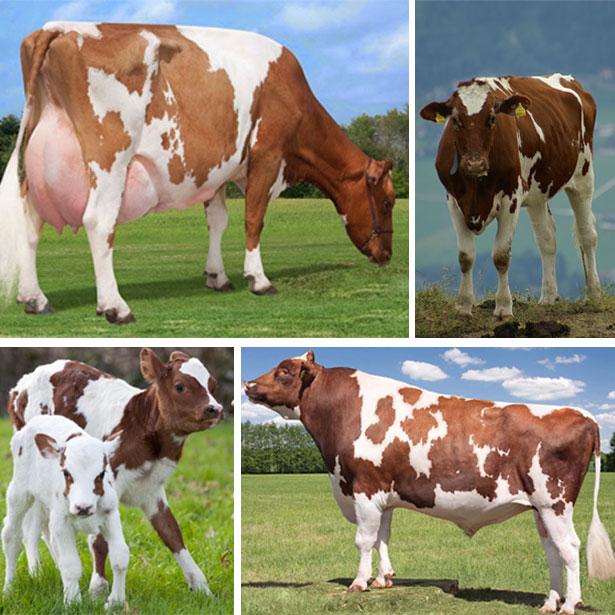
Factors affecting milk yield
Cattle milk yield changes not only with age, but also depending on the conditions of keeping, quality of care and feeding, seasonal and climatic characteristics, breed characteristics.
Age and weight of the animal
The first calving occurs when the cow reaches 2 years old, weighing about 300 kg at this age. For good milk production after the second calving, a dairy animal must weigh at least 500 kg, the height at the withers must be from 1.2 m.
You should not expect a large amount of milk from a cow that has calved for the first time. A young individual rarely gives more than 10 liters per day. The daily milk yield gradually increases with each new pregnancy. The most productive cow is milked after 5-6 pregnancies. An old individual that calves 10-12 times gives much less milk.
Season
The amount of milk changes seasonally, which is associated with a change in diet. In the summer months, cows eat food rich in proteins and vitamins, so the milk yield is significantly higher than in winter. If in winter an individual gives 10-12 liters of milk, then the summer daily volume increases to 18-25 liters. If calving falls in autumn, the cow will have more milk than usual during the winter months. To make winter milking more productive, hay in the diet is supplemented with juicy roots and fruits saturated with vitamins:
- carrots;
- pumpkin;
- potatoes;
- fodder beets.
Best dairy breeds
A cow's belonging to a highly productive dairy breed has a great influence on milk production.
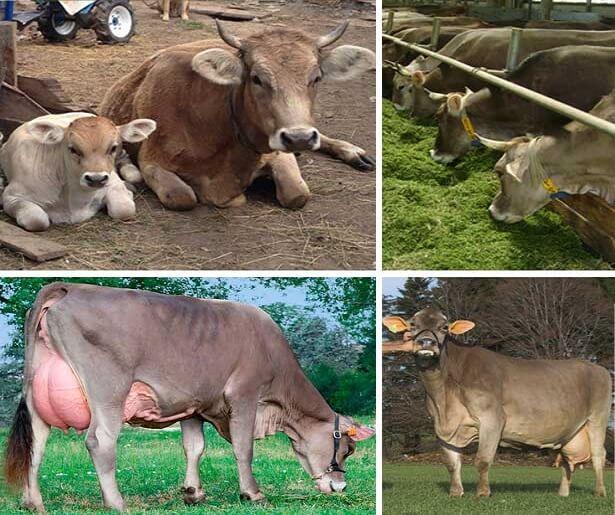
It is not difficult to determine a productive individual, she has:
- small skull;
- strong and muscular hind legs;
- large udder;
- moderately rounded belly;
- back without strong hump.
More milk is given by representatives of the following breeds:
- The Holstein is the most popular breed bred in the Netherlands. Representatives are the unchanged record holders in terms of the annual volume of milk. An adult cow weighs 700 kg, she has a large udder of a beautiful round shape.
- Kholmogorskaya is a breed with a strong skeleton and developed muscle mass. The weight of an adult is 500 kg, the skull is narrow, the color is red with black spots.
- Black and white - Soviet breed with a strong skeleton. The cow weighs 400 kg and is adapted to the climatic conditions of Russia.
- Steppe red is a common breed in Ukraine, it is distinguished by its unpretentiousness and unpretentious care. The animal weighs 400 kg, the skeleton is light, the physique is lean.
- Yaroslavskaya is a popular cow in Russia, undemanding in nutrition. An adult weighs 500 kg, the color is predominantly black.
- Ayrshire is a Scottish breed of red and white color. The weight of an adult is 450 kg, the skeleton is light.
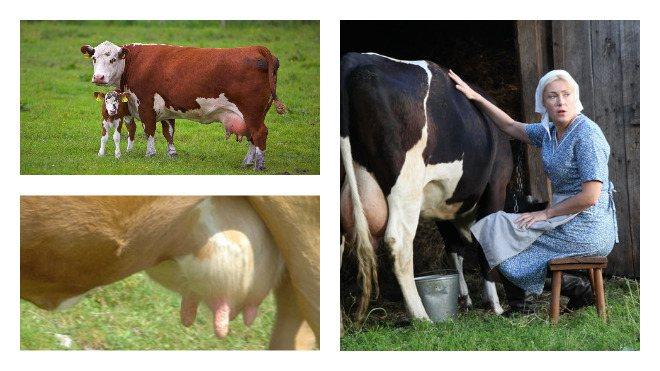
Competent care
The main conditions for good cattle milk yield are proper feeding, regular grazing. In the summer, cows are in the pasture. In the winter months, hay becomes the basis of the diet, animals must have constant access to it. To obtain high-quality milk with a good taste and high fat content, the ration is enriched with grain, compound feed, and juicy food. Feed and water must always be fresh.On hot days, cows drink more than 100 liters of water per day. Periodically, the animals are given food supplements and vitamin complexes.
An important factor in milk yield is the farmer's attitude to livestock. Cows give more milk when the owner treats them kindly.
The conditions for keeping cattle strongly affect the milk yield. Cows should be kept in a warm, clean, dry, lighted barn. The owner must regularly clean and ventilate the room, collect manure, and avoid drafts. It is advisable to equip the barn with light sources to maintain an acceptable day length. In good weather, the cattle are taken to the corral. Being outdoors has a positive effect on milk production. The animals are regularly cleaned, the udder and genital area is washed, and the hooves are cleaned.
Milk yield records
In every country there are record-breaking cows that produce large volumes of milk. But the record holder, which no one has yet managed to overtake, is the Cuban cow Ubre Blanca, obtained by crossing a Holstein breed and a zebu. Fidel Castro was personally proud of her, and there was a reason: in 1981 more than 41 thousand liters of milk were received from her.
There are also many record holders among Russian breeds. On the 3rd place in the world ranking is the Yaroslavl cow Vienna, which in 1940 gave 31 thousand liters. On the 5th place is the black-and-white cow, which in 1972 gave 19.5 thousand liters.
How long can a cow give milk
Bovine mammary glands produce the product throughout life from the first calving. In the life of an animal, there are 3 periods with different productivity:
- Maturation is the stage from birth to first calving.
- Mature age is the productive period of time from the first pregnancy to 14-16 years.
- Old age is the stage of extinction of milk production.
The period of milk production, when the hormone prolactin is actively produced, lasts from 10 to 50 days. It is important to milk the cow regularly during this period to stimulate lactation. During milking, 2 times a day, the calf should be brought to the mother for a few minutes, so that by sucking on the udder, it helps to shed.
The milking period lasts about 10 months, ending 2 months before insemination. If pregnancy does not happen, the cow is called barnyard, she does not give milk. In representatives of some dairy breeds, productivity remains for 2 years, but in the second year the milk yield becomes low.
